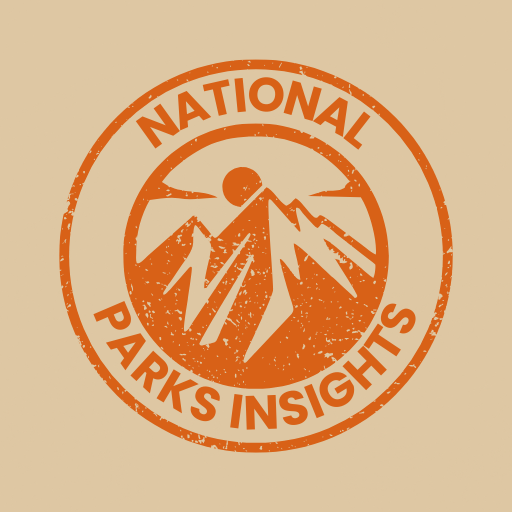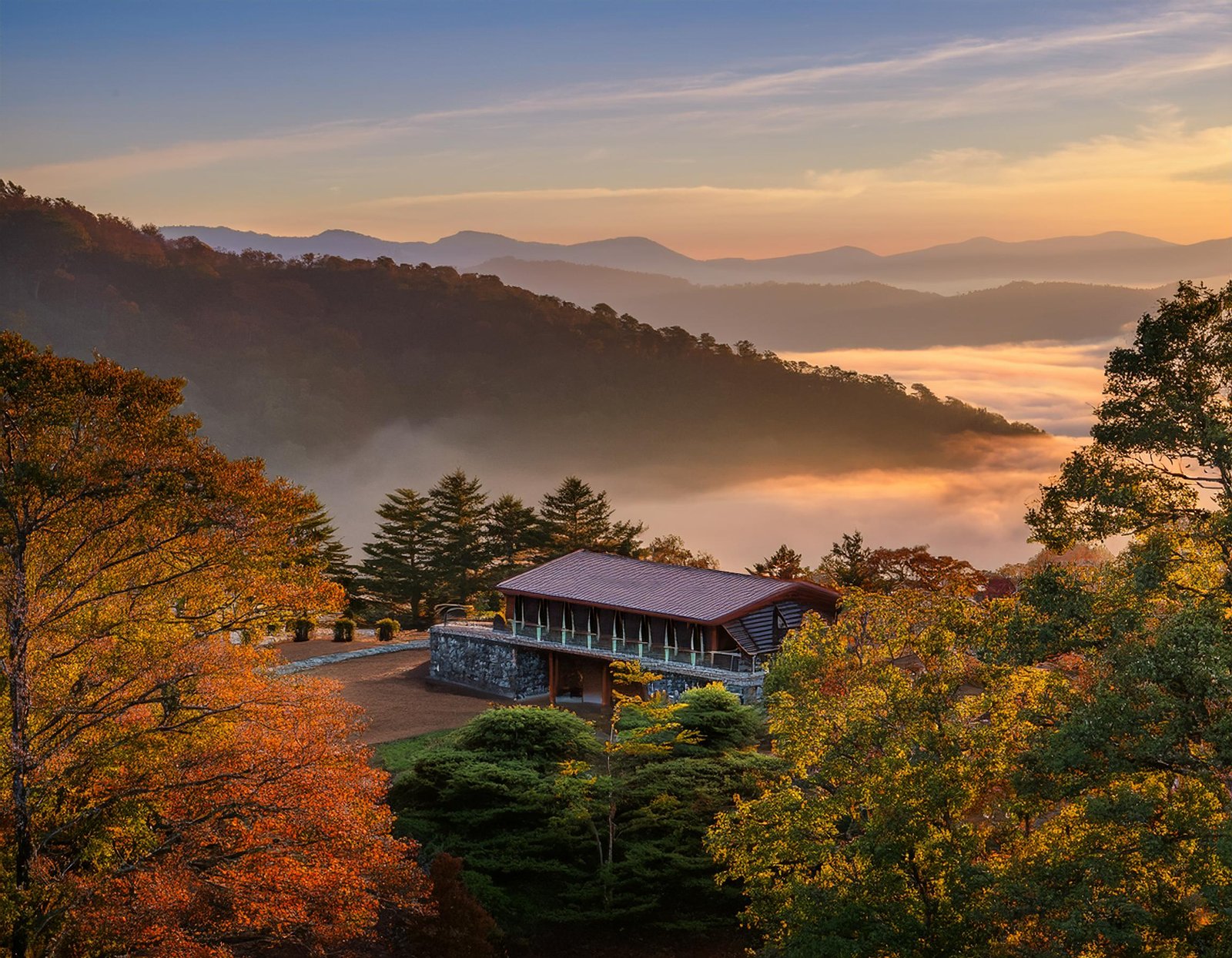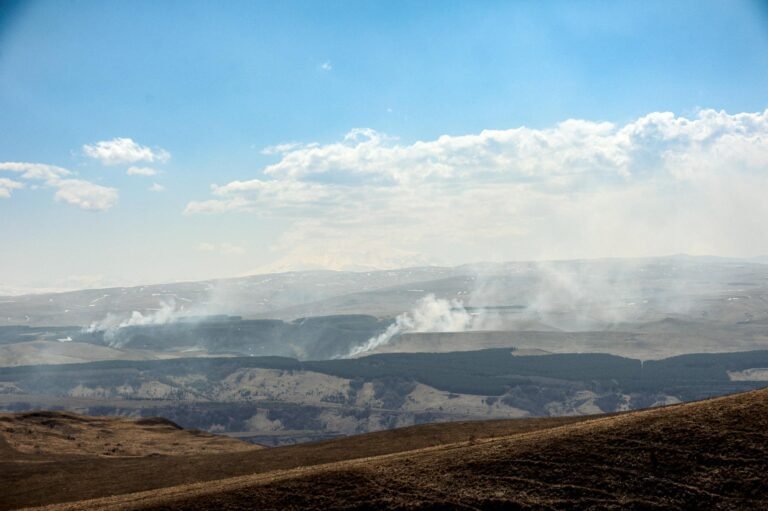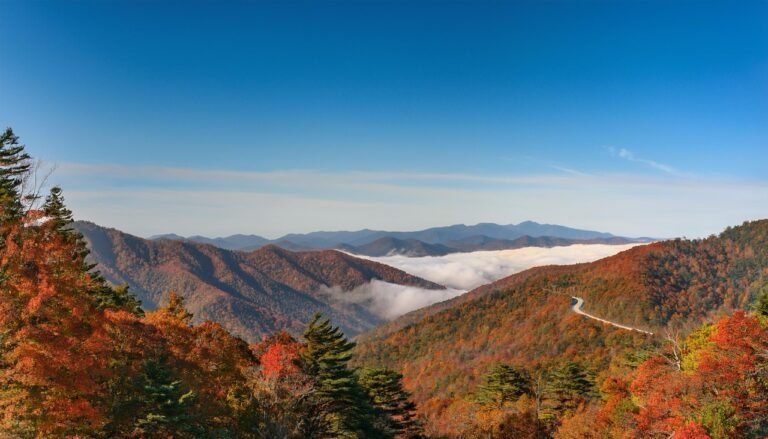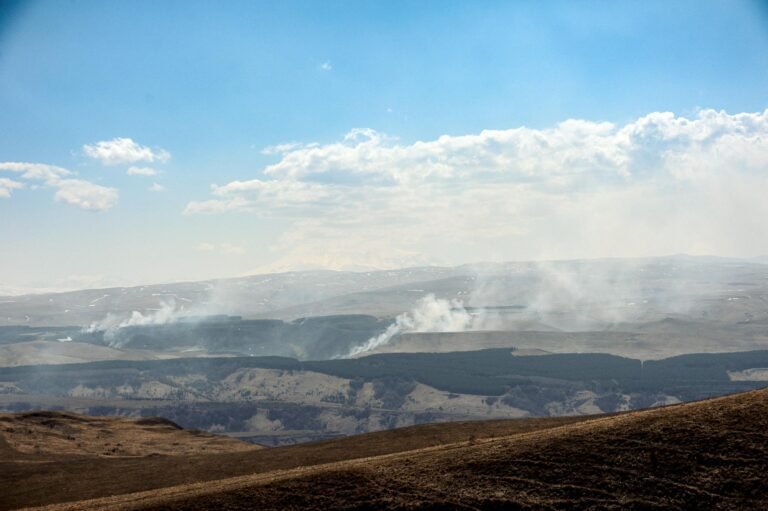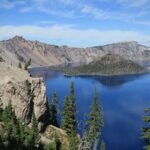Exploring Great Smoky Mountains National Park Visitor Center
The Great Smoky Mountains National Park Visitor Center is an essential stop for visitors seeking to explore the park’s rich natural beauty and cultural history.
Great Smoky Mountains National Park is a gem of natural beauty and rich history, making it a must-visit spot for families. Here, you’ll get the lowdown on where it is, what makes it special, and some handy visitor stats to help you plan your trip.
Where Is It and What’s the Big Deal?

Great Smoky Mountains National Park straddles the border between North Carolina and Tennessee. It’s famous for its diverse plant and animal life, ancient mountains, and the remnants of Southern Appalachian culture. As the most visited national park in the U.S., it offers something for everyone—from scenic drives and historical sites to countless hiking trails.
The park is home to over 19,000 species of plants and animals, with many more yet to be discovered. Whether you’re into exploring lush forests, enjoying picturesque waterfalls, or just soaking in the stunning views, the Great Smoky Mountains National Park has got you covered.
For a detailed map, check out the great smoky mountains national park map.
Visitor Stats: What You Need to Know
Knowing a bit about visitor stats can help you make the most of your trip. Here are some key insights:
- Most visitors (81%) aren’t locals.
- The average stay in the area is 4 days.
- About 62% of visitors check out Gatlinburg.
- Pigeon Forge is also a hit, with 50% of visitors heading there.
- Other popular spots include Cherokee (24%), Sevierville (19%), and Townsend (16%).
| Location | Percentage of Visitors (%) |
|---|---|
| Gatlinburg | 62 |
| Pigeon Forge | 50 |
| Cherokee | 24 |
| Sevierville | 19 |
| Townsend | 16 |
Top spots within the park include:
- Cades Cove: 39% of visitors
- Sugarlands Visitor Center: 28%
- Clingmans Dome: 20%
| Park Location | Percentage of Visitors (%) |
|---|---|
| Cades Cove | 39 |
| Sugarlands Visitor Center | 28 |
| Clingmans Dome | 20 |
In 2022, visitors to the park spent $2.1 billion in nearby communities. This spending supported 32,590 jobs and had a total economic benefit of $3.3 billion.
For more info on lodging options and camping facilities, or to explore the best waterfalls and hiking trails, check out our other guides.
By knowing these stats, you can better plan your visit to make sure you hit all the highlights of the Great Smoky Mountains National Park.
Visitor Guidelines and Safety
Heading to the Great Smoky Mountains National Park? Awesome! Just keep a few safety tips in mind to make your trip smooth and fun. Here’s the lowdown on bear safety and parking.
Bear Safety
Seeing a bear can be thrilling, but remember, these guys are wild and unpredictable. Here’s how to stay safe:
- Stay Alert: Keep your eyes peeled for bear signs like tracks or scat.
- Keep Your Distance: If you spot a bear, don’t get too close. Stay at least 150 feet away. Use binoculars or a zoom lens to get a closer look.
- No Feeding: Feeding bears is a big no-no. It’s illegal and can make them aggressive.
- Store Food Right: When camping or having a picnic, stash your food in bear-proof containers or hang it from a tree away from your site.
- Make Noise: While hiking, make some noise to avoid surprising a bear. Clap, talk loudly, or use a bear bell.
If you bump into a bear, don’t run. Back away slowly and speak calmly. If it charges, stand your ground and use bear spray if you have it. For more tips, check out the park’s official website.
Parking Tips
Parking can be a bit of a hassle, especially during peak times. Here’s how to handle it:
- Parking Tag: You need a parking tag if you’re staying longer than 15 minutes. Get it before you go.
- Arrive Early: Beat the crowds by getting there early, especially at hot spots like Cades Cove.
- Backup Plan: Sometimes parking fills up fast. Have a Plan B ready.
- Park Smart: Make sure your car is fully off the road. Don’t block traffic or park where you’re not supposed to.
- Main Entrances: The park has three main entrances in Gatlinburg, Cherokee, and Townsend. Plan your route to dodge traffic jams.
For more parking info, check out the Great Smoky Mountains National Park map.
| Location | Parking Availability |
|---|---|
| Sugarlands Center | Limited |
| Oconaluftee Center | Limited |
| Cades Cove | High Demand |
| Clingmans Dome | High Demand |
Stick to these tips, and you’ll have a blast in the Great Smoky Mountains National Park. For more on planning your visit, including lodging and camping, check out our other articles.
Get more information on National Parks
Popular Spots in the Smokies
The Great Smoky Mountains National Park is packed with attractions that promise a memorable time for you and your family. Here are some of the top spots you shouldn’t miss.
Cades Cove
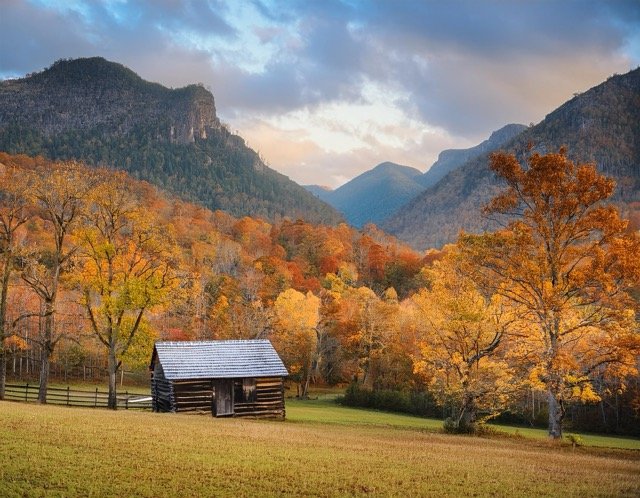
Cades Cove is a must-see in the Smokies. This wide valley, surrounded by mountains, is a hit with 39% of park visitors. It’s not just pretty; it’s also teeming with wildlife like white-tailed deer, black bears, and wild turkeys.
This picturesque valley is easily accessible from the Sugarlands Visitor Center, making it a popular destination for those exploring Great Smoky Mountains National Park. Cades Cove offers stunning views, wildlife sightings, and historical structures.
You can drive the 11-mile loop road, which has plenty of pull-offs for photos and taking in the view. If you prefer walking or biking, there are trails leading to historic buildings like old churches, barns, and log houses.
| Activity | Distance |
|---|---|
| Cades Cove Loop Road | 11 miles |
| Abrams Falls Trail | 5 miles round trip |
| Cades Cove Campground | Nearby |
For more fun stuff, check out our list of things to do in Great Smoky Mountains National Park.
Cades Cove is easily accessible from the Sugarlands Visitor Center, making it a popular destination for those exploring Great Smoky Mountains National Park.
Sugarlands Visitor Center
Located near Gatlinburg, Tennessee, the Sugarlands Visitor Center serves as a hub for visitor information. It offers comprehensiveresources for planning your visit to the Great Smoky Mountains National Park, including maps, exhibits, and knowledgeable staff who can provide guidance on trails and park activities.
The center also offers ranger-led programs and has a short, easy nature trail perfect for families with young kids. Don’t forget to grab a Great Smoky Mountains National Park map to plan your visit.
The Sugarlands Visitor Center offers comprehensive resources for planning your visit to the Great Smoky Mountains National Park.
| Facility | Feature |
|---|---|
| Exhibits | Wildlife, Geology, History |
| Ranger Programs | Educational Talks, Guided Walks |
| Nature Trail | Easy, Family-Friendly |
For more details, visit our page on the Great Smoky Mountains National Park Visitor Center.
Clingmans Dome
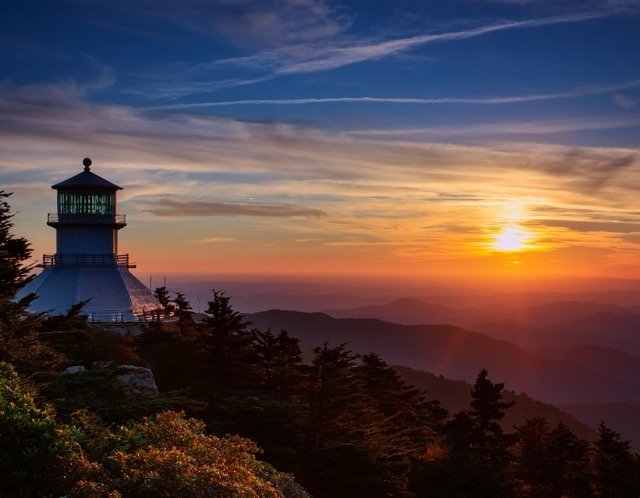
Clingmans Dome is another favorite, drawing 20% of park visitors. It’s the highest point in the park and offers jaw-dropping 360-degree views of the mountains and valleys.
The Clingmans Dome Observation Tower is a half-mile walk up a steep, paved trail from the parking area. On a clear day, you can see over 100 miles. It’s a hot spot for sunrise and sunset views.
| Feature | Detail |
|---|---|
| Elevation | 6,643 feet |
| Trail Length | 0.5 miles paved |
| Best Time to Visit | Sunrise, Sunset |
Check the Great Smoky Mountains National Park weather before heading up, as conditions can change quickly.
These popular spots in the Great Smoky Mountains National Park offer something for everyone. Whether you’re into history, wildlife, or just want to soak in some stunning views, there’s plenty to enjoy. For more info on lodging, hiking trails, and other activities, explore our other resources:
- Great Smoky Mountains National Park Lodging
- Best Hikes in Great Smoky Mountains National Park
- Great Smoky Mountains National Park Waterfalls
Visitor Centers and Services
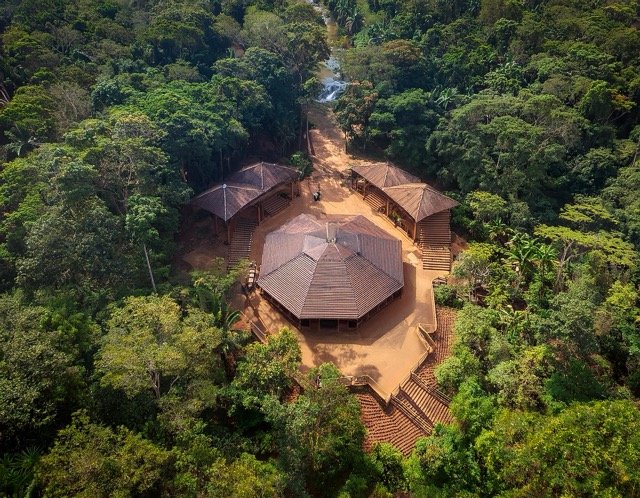
The Great Smoky Mountains National Park is packed with info and services to make your visit awesome. The two main visitor centers are the Sugarlands Visitors’ Center and the Oconaluftee Visitor Center. Both spots are loaded with resources, exhibits, and ranger stations to help you get the most out of your trip.
Sugarlands Visitors’ Center
Right by the Gatlinburg entrance, the Sugarlands Visitors’ Center is your go-to starting point. It’s got exhibits on wildlife, geology, and park history. Plus, there’s a 20-minute film that gives you a quick peek at what’s in store.
| Facility | Details |
|---|---|
| Location | Near Gatlinburg entrance |
| Exhibits | Wildlife, geology, history |
| Film | 20-minute overview |
| Services | Ranger station, restrooms, gift shop |
Grab maps, brochures, and other handy info at Sugarlands. Rangers are on hand to answer questions, give safety tips, and suggest the best hiking trails and things to do. Don’t miss the nearby waterfalls for a cool experience.
Oconaluftee Visitor Center
Situated near Cherokee, North Carolina, the Oconaluftee Visitor Center features cultural exhibits that delve into the history of the Southern Appalachian region. Visitors can explore the Mountain Farm Museum and learn about traditional Appalachian life.
At the Oconaluftee Visitor Center, visitors can delve into the cultural history of the Southern Appalachian region.
| Facility | Details |
|---|---|
| Location | Near Cherokee entrance |
| Exhibits | Cultural history, early settlers |
| Film | Ecosystem overview |
| Services | Ranger station, restrooms, gift shop |
Oconaluftee is perfect for planning your visit. Rangers can help you find the best camping spots, lodging options, and cabins. If you’re into the park’s unique plants and animals, the exhibits dive into local biodiversity.
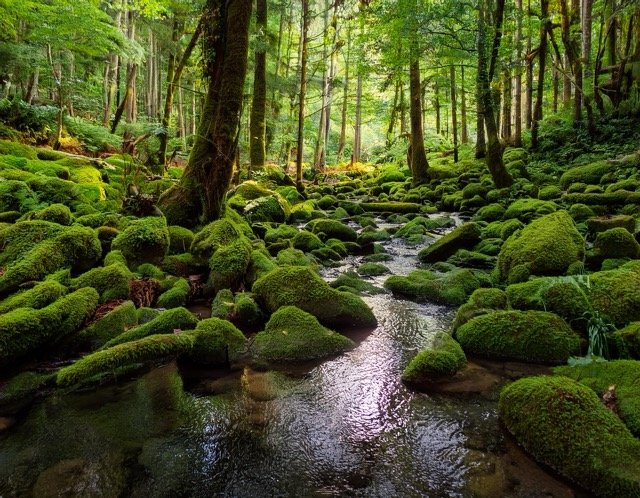
Both centers are conveniently located near the main entrances along U.S. Highway 441, making them easy stops as you explore the park. Whether you need info on weather, are looking for the best hikes, or just need a quick break, these centers are here to make sure you have a memorable and safe time in the Great Smoky Mountains National Park.
Current Events and Alerts
As of 2024, the Great Smoky Mountains National Park has expanded its adaptive programs to enhance accessibility for all visitors. This initiative includes new ranger-led programs designed for visitors of all abilities, featuring hiking, biking, and kayaking activities.
Additionally, the park has introduced GRIT Freedom Chairs, a type of off-road wheelchair, available for visitors to use on select trails, such as the Little River and Deep Creek trails.
These efforts aim to provide inclusive experiences and promote environmental awareness and stewardship. Furthermore, visitors should be aware of the seasonal operating hours of the park’s visitor centers.
The Sugarlands and Oconaluftee Visitor Centers are open daily except on Christmas Day, with hours varying seasonally.
From March to November, they operate from 9:00 a.m. to 5:00 p.m., and from December to February, they are open from 9:00 a.m. to 4:30 p.m. Clingmans Dome Visitor Contact Station operates seasonally, from April 11 to November 30, and is closed during the winter months.
Accessibility Programs
The introduction of adaptive programs at visitor centers like Sugarlands ensures all visitors can enjoy Great Smoky Mountains National Park. These initiatives include accessible trails and interpretive programs designed for individuals with varying abilities.
Economic Impact
Visitor spending at centers like Sugarlands and Oconaluftee significantly contributes to local economies. These centers not only enhance visitor experiences but also support surrounding communities through tourism-related revenue.
By visiting the Great Smoky Mountains National Park Visitor Center, you gain valuable insights into the park’s offerings while ensuring a memorable and informed experience in one of America’s most cherished national parks.
Visitor Spending Analysis
In 2022, visitors like you spent a whopping $2.1 billion in the areas around the park. This cash injection keeps local businesses buzzing and the economy thriving.
| Year | Visitor Spending (in billions) | Cumulative Economic Benefit (in billions) |
|---|---|---|
| 2022 | $2.1 | $3.3 |
Hotels and lodges raked in the most, with a national economic output of $9 billion. Restaurants weren’t far behind, contributing $4.6 billion. This spending fuels a variety of services and businesses, giving the local economy a solid boost.
For tips on where to stay and eat, check out our guides on lodging and camping in the Great Smoky Mountains National Park.
Job Creation Benefits
Your spending doesn’t just stop at businesses; it also creates jobs. In 2022, visitor spending supported 32,590 jobs in the local area. These jobs span across hospitality, retail, and transportation, offering diverse opportunities for the community.
| Year | Jobs Supported |
|---|---|
| 2022 | 32,590 |
On a national scale, park visitors’ spending supported 378,400 jobs. Within 60 miles of a national park, 314,600 jobs were created, showing how vital tourism is for these gateway communities.
So, your visit not only lets you soak in the park’s beauty but also helps thousands of people make a living. If you’re planning your trip, explore things to do and best hikes for an unforgettable experience.
By understanding the economic impact of your visit, you can see how your adventure in the Great Smoky Mountains National Park supports the local community. For more trip planning info, check out the park map and weather updates.
Current Events and Alerts
In 2024, the Great Smoky Mountains National Park has expanded its visitor services with the opening of the new Great Smokies Welcome Center in Townsend, Tennessee.
This facility offers a larger space for educational materials, souvenirs, and park-related goods, enhancing the visitor experience. The Welcome Center operates from 9 a.m. to 5 p.m., seven days a week, year-round, except on Christmas Day. Additionally, the park continues to offer adaptive programs to improve accessibility for all visitors.
These programs include hiking, biking, and kayaking activities designed for individuals with disabilities, supported by specialized equipment like off-road wheelchairs available at select trails.
Visitors are encouraged to check the park’s official website for the latest updates on visitor center operations, trail conditions, and any weather-related alerts to ensure a safe and enjoyable visit.
Latest Update and News
The Great Smoky Mountains National Park continues to enhance visitor experiences and accessibility in 2024. A significant addition to the park’s facilities is the new Great Smokies Welcome Center in Townsend, Tennessee
. These programs now include specially designed hiking, biking, and kayaking activities for individuals with disabilities. To support these initiatives, the park has introduced GRIT Freedom Chairs, a type of off-road wheelchair, available for use on select trails such as the Little River and Deep Creek trails.
Visitors should note the seasonal operating hours of the park’s visitor centers:
- Sugarlands and Oconaluftee Visitor Centers: Open daily (except Christmas Day)
- March to November: 9:00 a.m. to 5:00 p.m.
- December to February: 9:00 a.m. to 4:30 p.m.
- Clingmans Dome Visitor Contact Station: Open seasonally from April 11 to November 30
These updates reflect the park’s ongoing efforts to improve accessibility, provide inclusive experiences, and promote environmental awareness and stewardship.
Frequently Asked Questions (FAQ’s)
What are the operating hours of the Great Smoky Mountains National Park Visitor Centers?
The Sugarlands and Oconaluftee Visitor Centers are open daily year-round, except for Christmas Day. From March to November, they operate from 9:00 a.m. to 5:00 p.m. During winter months (December to February), hours are slightly reduced to 9:00 a.m. to 4:30 p.m. The Clingmans Dome Visitor Contact Station is open seasonally from April 11 to November 30.
Is there a fee to enter the Great Smoky Mountains National Park?
No, there is no entrance fee for the Great Smoky Mountains National Park. It's one of the few national parks that offers free admission to all visitors year-round.
Are there accessible programs available at the Great Smoky Mountains National Park?
Yes, the park has expanded its adaptive programs to cater to visitors of all abilities. These include specially designed hiking, biking, and kayaking activities for individuals with disabilities. The park also offers GRIT Freedom Chairs, a type of off-road wheelchair, for use on select trails.
What new facilities have been added to the park in 2024?
A significant addition is the new Great Smokies Welcome Center in Townsend, Tennessee. This spacious center offers an expanded selection of educational materials, souvenirs, and park-related goods. It operates year-round from 9 a.m. to 5 p.m., seven days a week (except Christmas Day).
Can I see wildlife in the park?
Yes, the Great Smoky Mountains National Park is home to diverse wildlife, including black bears, white-tailed deer, and over 200 species of birds. The best times for wildlife viewing are typically early morning and late evening. Remember to maintain a safe distance and never feed the animals.
Are pets allowed in the Great Smoky Mountains National Park?
Pets are allowed in certain areas of the park but must be kept on a leash at all times. They are permitted in campgrounds, picnic areas, and along roads, but are not allowed on most trails or in the backcountry. Service animals are allowed throughout the park.
What's the best time to visit the Great Smoky Mountains National Park?
The park is beautiful year-round, but each season offers unique experiences. Spring (April-May) is ideal for wildflowers, summer (June-August) for hiking and waterfalls, fall (September-November) for foliage, and winter (December-February) for serene landscapes and fewer crowds.
How can I plan my visit to the Great Smoky Mountains National Park?
Start by visiting the park's official website or stopping at one of the visitor centers for up-to-date information on trail conditions, weather, and park programs. Consider your interests (hiking, wildlife viewing, scenic drives) and the season of your visit when planning your itinerary.
Are there guided tours available in the park?
Yes, the park offers a variety of ranger-led programs, including guided hikes, educational talks, and evening campfire programs. These programs are typically free and schedules can be found at the visitor centers or on the park's official website.
What should I do if I encounter a bear in the park?
If you encounter a bear, remain calm and do not approach it. Slowly back away while keeping the bear in sight. Make noise to identify yourself as human. Never run or climb a tree, as bears can do both faster than humans. Report all bear encounters to park rangers.
